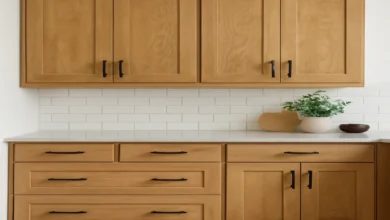Tips How You Can Upgrade Your Room

Your bedroom is one of the most important rooms in your house as it will be your forever favorite corner. Whether its luxurious bedding, soothing color schemes pay close attention to your design decisions as it will result in a chic space for rest and relaxation. Here we are sharing some tips to take a bedroom design to the next level.
Use one color
Always choose one color to make your room elegant and royal. You can go for lighter shades as well as solid as per your convenience. You can add a statement wall which will standout. Instead of purchasing new artwork use what you already have. Choose a single color for the walls can also help to make a bigger than it really is, so just stick to one shade if you want to create an illusion of space in the bedroom.
Upgrade your furniture
Once you have selected a bed frame, you will be able to decide how to upgrade your furniture and a seamless, cohesive design. If you are short of space choose furniture according to your room color. Too much heavy and chunky furniture will not look good and take spaces which will make you room over crowded.
Lightning
Changing the light or having proper lighting will enhance your room appearance. You will be surprised to see the impact of good light in your room. When you use different lighting options in to create a magical effect. Using wall lights and lamp creates a warmer and more peaceful environment than bright ceiling lights it will make room more on brighter side.
Declutter and organize
A clutter free bedroom looks so serene and peaceful. Always take out time to declutter the items that are no longer of use. Create a clean and orderly space. Rearrange Shelves, fold clothes neatly and maintain your wardrobe with cleanliness. Design your wardrobe in such a way that it will all the things in proper way so that you don’t need extra spaces to arrange things.
Incorporate mirrors
Mirrors not only create and illusion of having more spaces but also makes your room feel brighter and upgraded. Choose perfect size and shape as per your room space. Place them strategically to enhance natural light and add a touch of glamour to your room. If you are a influence or a lifestyle educator it will be must have thing in your room.
Create a workspace in a bedroom
Transfer a corner of your bedroom in to your work space. Rearrange a comfortable chair your laptop or desktop on a small table so you can work whenever you want from the comfort of your home. Make the perfect workstation at home and save space efficiently. You will many options for the table from the market which are designed while keeping in mind to save space.
Revamping your bedroom can be daunting task but if you would think and make a list according to your requirements then only you can get to know what to opt or what not. By implementing these ideas you can transform your sleeping space into a luxury bedroom. Set your budget and embrace your creativity to give your room best makeover as it reflects your style and at the end of the day it will be your private space for relaxation.
Follow: Action TIme USA


